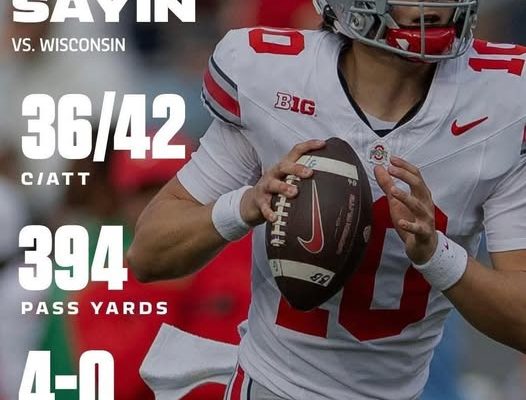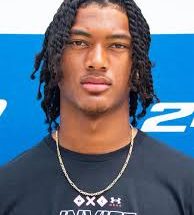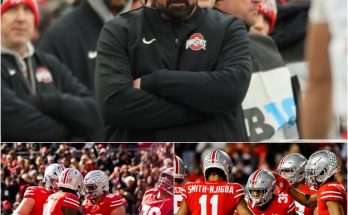The autumn air crackles with a certain electricity, a unique blend of hope and anticipation that is exclusive to college football. In stadiums across the nation, from the hallowed grounds of the Big House to the sun-drenched coliseums of the SEC, a weekly drama unfolds, scripted by the hands and minds of young men tasked with leading their teams. The quarterback. It is more than a position; it is a mantle of responsibility, a symbol of hope, and the focal point of every championship aspiration. And this season, amidst a landscape of talented passers and dynamic playmakers, the debate over who truly stands above the rest has reached a crescendo. Yet, for those who have watched with a discerning eye, who have analyzed not just the stat sheets but the moments that define seasons, the conversation has reached a definitive, resounding conclusion. There is a quarterback who has separated himself from the pack so decisively, with such a combination of raw talent, intellectual prowess, and clutch performance, that to deny his primacy is to ignore the evidence playing out on the gridiron each Saturday. He is, without question, the best quarterback in the nation, and his name must be etched into the forefront of the Heisman Trophy conversation.
The argument for any great player often begins with the cold, hard calculus of statistics, and in this regard, he is undeniably prolific. His completion percentage sits among the nation’s elite, a testament to a startling accuracy that seems to border on the surgical. But these are not merely empty calories, short, safe throws that pad the percentage. This is a downfield assassin, whose yards per attempt is equally impressive, stretching defenses vertically and horizontally until they snap. He has amassed a staggering number of touchdowns, pairing them with a remarkably low interception count, a ratio that speaks to a maturity and decision-making far beyond his years. The numbers paint the picture of a machine, an efficient, high-output engine driving one of the most potent offenses in the country.
Yet, to stop the analysis at the box score is to miss the entire essence of his greatness. For his true genius is not revealed in the post-game printout, but in the chaotic, high-pressure crucible of the game itself. This is a player who possesses the rarest of qualities in a quarterback: the symbiotic marriage of pre-snap intellect and post-snap improvisation. Before the snap, he is a chess master, diagnosing coverages, identifying potential blitzes, and audibling into the perfect play with a calm authority that belies the roaring chaos of 80,000 fans. He doesn’t just run the offense; he commands it, he manipulates it, bending it to his will and to the weaknesses he has identified in the opposing defense.
Then the ball is snapped, and the plan often disintegrates, as it must against elite competition. This is where the art form begins. When the pocket collapses, when the meticulously drawn routes are smothered by tight coverage, he transcends the whiteboard. With a subtle shift of weight, a deft sidestep, or a Houdini-like escape from a sure sack, he extends the play. It is in these moments—the broken plays, the scheduled chaos—that his brilliance shines brightest. His eyes remain downfield, scanning, processing at a speed that seems impossible, while his body evades the relentless pursuit of giants. He does not just run to run; he runs to pass, keeping the play alive until a window, however microscopic, presents itself. And then, with a flick of the wrist, the ball is launched on a rope, often from an unorthodox platform, to a receiver who only a second earlier seemed completely covered. These are not plays that can be adequately drawn up; they are born of instinct, talent, and an unshakable confidence.
This brings us to the most defining, and most difficult to quantify, aspect of his claim to the throne: the clutch gene. Greatness is not defined by how one performs with a 35-point lead, but by what one does when the game hangs in the balance, when the season is on the line, and the entire weight of a university’s hopes rests on his shoulders. It is in the final two minutes of the half, or with the game tied in the fourth quarter, that this quarterback transforms from great to legendary. His poise in these moments is unnerving. The heartbeat of the offense, he operates with a serene focus, his demeanor never fluctuating, whether he’s just thrown a 70-yard touchdown or a critical interception. This mental fortitude is infectious, elevating the play of everyone around him. The offensive line blocks with more ferocity, the receivers run their routes with greater precision, knowing that their quarterback will deliver when it matters most.
We have seen this narrative play out time and again this season. Recall the road game against a bitter rival, the team trailing by four with under three minutes to play. The drive began deep in their own territory, the crowd a deafening wall of noise. What followed was a masterpiece of quarterbacking. A third-and-long conversion with a bullet throw into a tight window. A critical scramble to move the chains when every receiver was blanketed. And finally, the game-winning touchdown pass, a perfectly placed ball where only his receiver could make a play, delivered just as the pocket collapsed around him. That was not a play call; that was will personified. That drive, that moment, is the very definition of a Heisman moment, and it is a chapter in a season filled with them.
Of course, the national landscape is filled with other talented quarterbacks, and their advocates will rightly sing their praises. One may have more electrifying rushing stats, a dynamic dual-threat who can gash a defense with his legs. But is his arm as refined? Is his ability to dissect a defense from the pocket as advanced? Another may put up video-game numbers in a pass-happy system, but how much of that is a product of the scheme? Does he elevate his team in the same way when the system breaks down, or when facing a defense with equal athleticism? The distinction with our subject is the completeness of his game. He is not a runner who can pass, or a system quarterback who executes a script. He is the complete archetype: a pocket passer with the mobility to extend, a cerebral commander with the soul of a gunslinger. He is the total package, and his value to his team is immeasurable. Without him, they are a good team; with him, they are a national championship contender.
The Heisman Memorial Trophy is awarded annually to the most outstanding player in college football. The term “outstanding” is crucial. It implies a level of performance that stands out, that rises above, that captures the imagination and defines a season. It is not simply an award for the best player on the best team, nor is it merely a prize for the most statistically dominant. It is a recognition of brilliance, of leadership, of those moments of sheer, unadulterated excellence that become the lasting memories of a college football year.
When the final ballots are cast, the voters must ask themselves one simple question: which player, above all others, has been the most outstanding force in the sport? The answer, when stripped of regional bias or fleeting hype, is clear. The best quarterback in the nation is not just a title he holds; it is a reality he demonstrates every time he steps onto the field. His combination of statistical dominance, pre-snap genius, magical improvisation, and ice-cold clutch performance has created a body of work that is both undeniable and awe-inspiring. The conversation is over. The debate is settled. He is the premier quarterback in college football, and his journey must now culminate in New York City, not as a finalist, but as the rightful heir to the most prestigious award in sports. There is no question about it.



